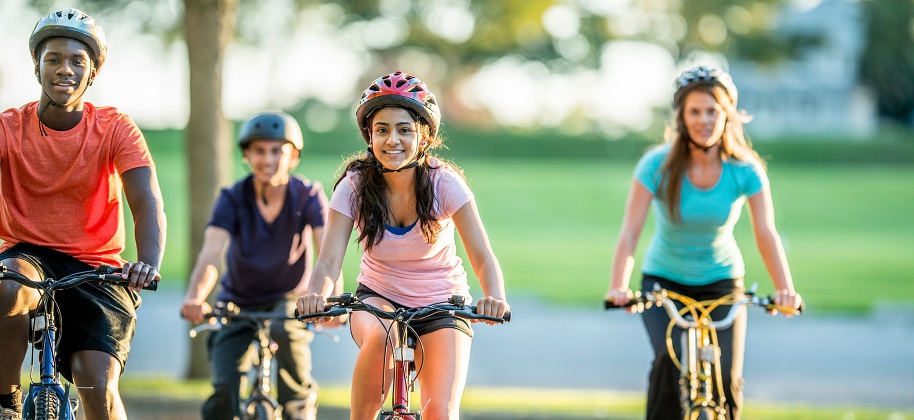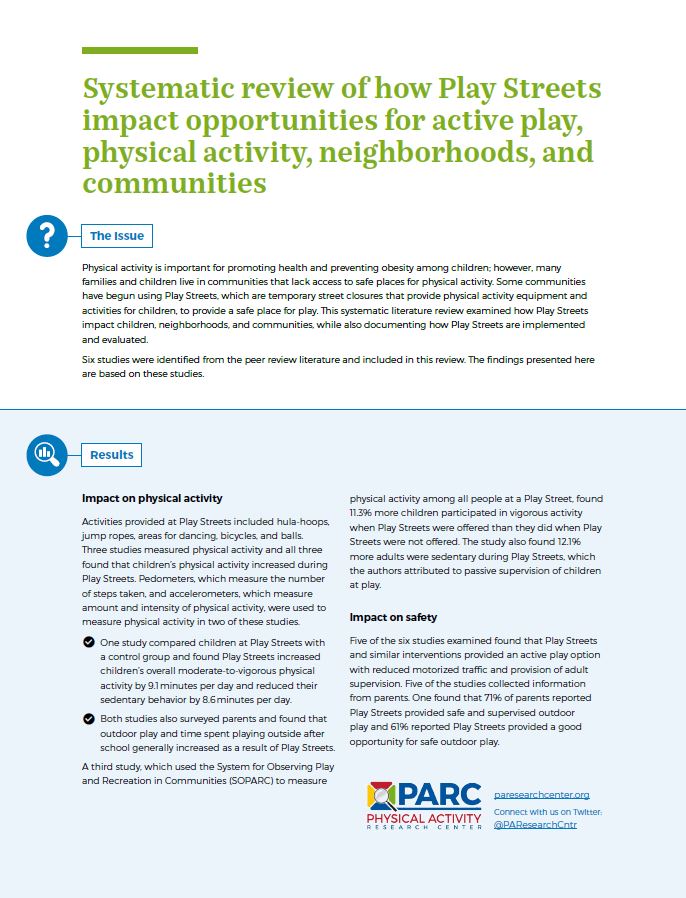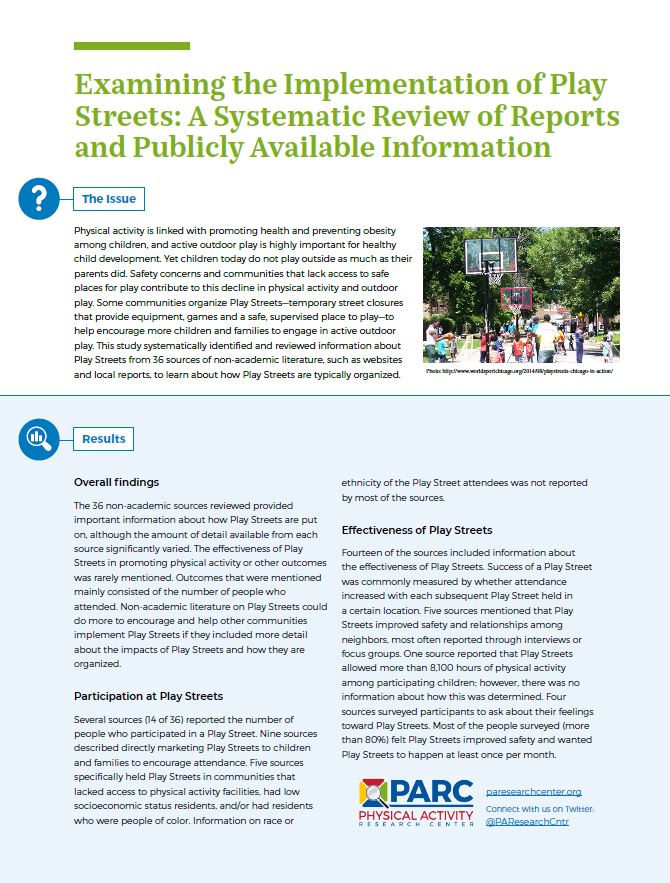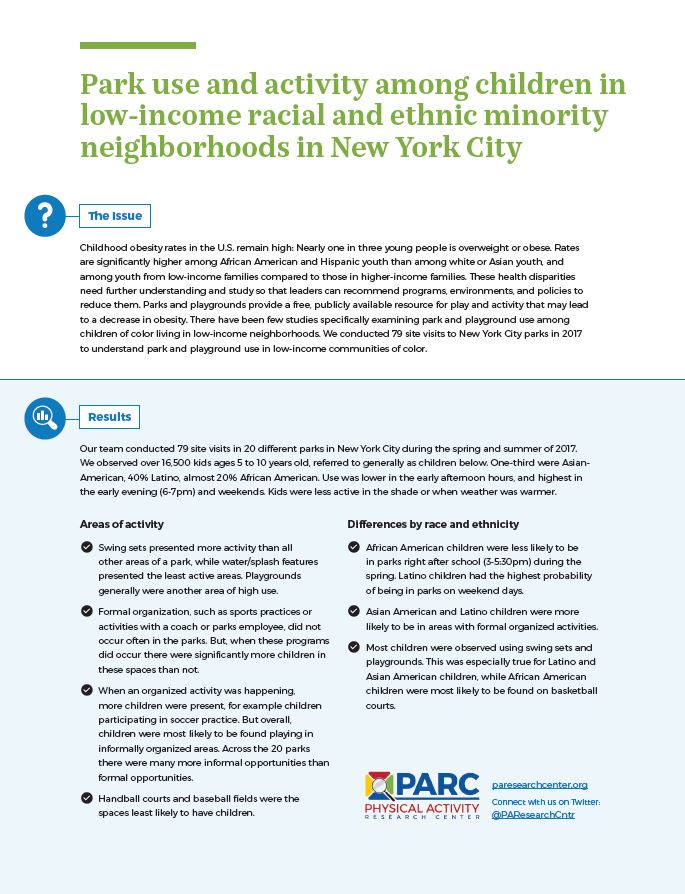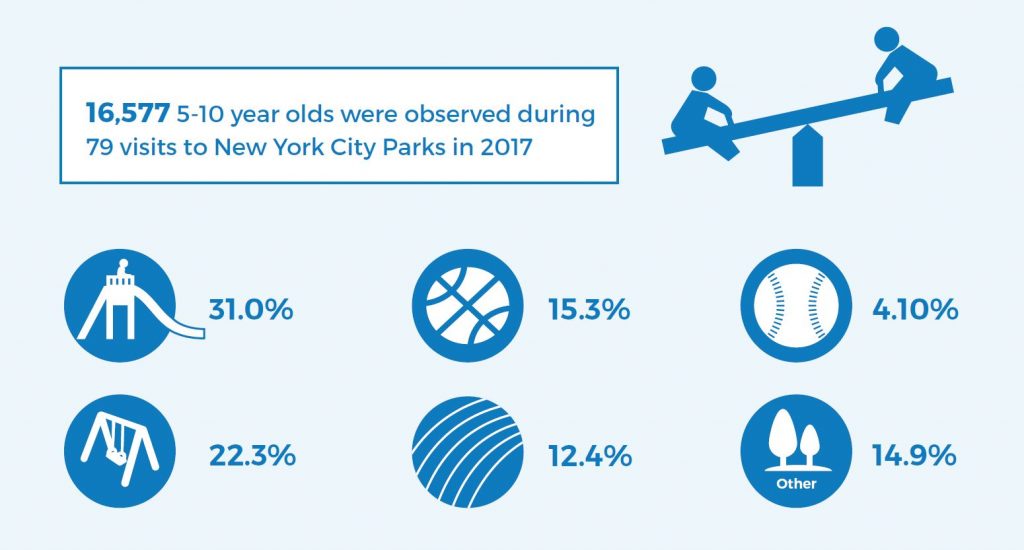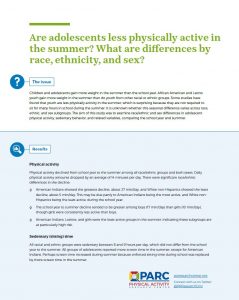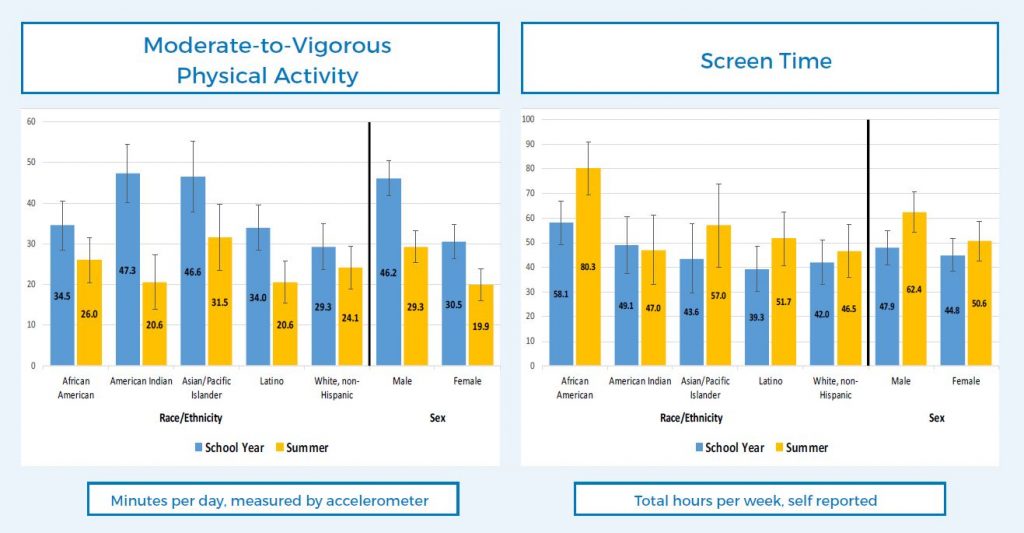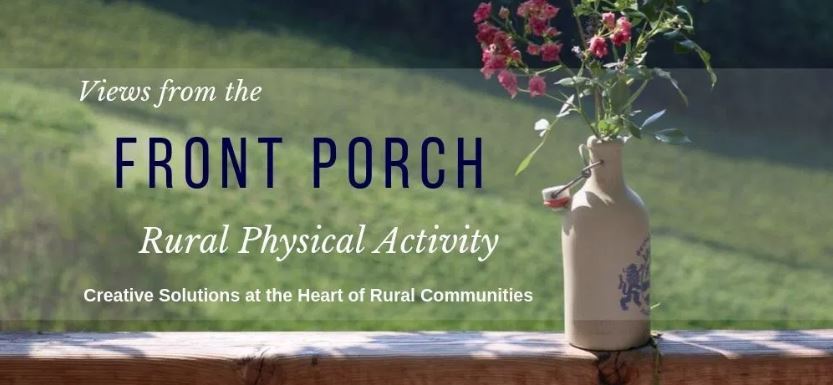Systematic review of how Play Streets impact opportunities for active play, physical activity, neighborhoods, and communities
By: M. Renée Umstattd Meyer and Christina N. Bridges Hamilton from Baylor University; Thomas L. Schmid from Centers for Disease Control and Prevention; and Amelie A. Hecht and Keshia M. Pollack Porter from Johns Hopkins University
Physical activity is important for promoting health and preventing obesity among children; however, many families and children live in communities that lack access to safe places for physical activity. Some communities have begun using Play Streets, which are temporary street closures that provide physical activity equipment and activities for children, to provide a safe place for play. This systematic literature review examined how Play Streets impact children, neighborhoods, and communities, while also documenting how Play Streets are implemented and evaluated. Six studies were identified from the peer review literature and included in this review. The findings presented here are based on these studies.
Results
Impact on physical activity
Activities provided at Play Streets included hula-hoops, jump ropes, areas for dancing, bicycles, and balls. Three studies measured physical activity and all three found that children’s physical activity increased during Play Streets. Pedometers, which measure the number of steps taken, and accelerometers, which measure amount and intensity of physical activity, were used to measure physical activity in two of these studies.
- One study compared children at Play Streets with a control group and found Play Streets increased children’s overall moderate-to-vigorous physical activity by 9.1 minutes per day and reduced their sedentary behavior by 8.6 minutes per day.
- Both studies also surveyed parents and found that outdoor play and time spent playing outside after school generally increased as a result of Play Streets.
A third study, which used the System for Observing Play and Recreation in Communities (SOPARC) to measure physical activity among all people at a Play Street, found 11.3% more children participated in vigorous activity when Play Streets were offered than they did when Play Streets were not offered. The study also found 12.1% more adults were sedentary during Play Streets, which the authors attributed to passive supervision of children at play.
Impact on safety
Five of the six studies examined found that Play Streets and similar interventions provided an active play option with reduced motorized traffic and provision of adult supervision. Five of the studies collected information from parents. One found that 71% of parents reported Play Streets provided safe and supervised outdoor play and 61% reported Play Streets provided a good opportunity for safe outdoor play.
Impact on neighborhoods and communities
Adults felt Play Streets increased a sense of community by strengthening relationships among neighbors and community members. This was confirmed by findings across several individual studies, including:
- 94% of adults reported Play Streets strengthened their community.
- 54% of parents reported Play Streets strengthened relationships with neighbors.
- 61% of parents reported Play Streets were a good way for children to make new friends.
- Most parents and children had positive feelings toward Play Streets.
- 43% of parents identified social interaction as the primary reason they liked Play Streets.
- At least 3 in 4 children reported they enjoyed Play Streets.
Racial/ethnic and socioeconomic findings
Three of the six studies included a majority of participants who were Hispanic or Latino. Four studies also included participants who were either of low socioeconomic status or lower income. The results from these studies show the potential impact of Play Streets in communities with fewer resources to be physically active.
Findings from this lay summary are available in the full article, published in the BMC Public Health:
Umstattd Meyer MR, Bridges CN, Schmid TL, Hecht AA, & Pollack Porter KM. Systematic review of how Play Streets impact opportunities for active play, physical activity, neighborhoods, and communities. BMC Public Health. 2019; 19: 335. https://doi.org/10.1186/s12889-019-6609-4.
Suggested Citation for Lay Summary:
Umstattd Meyer MR, Bridges CN, et al. Systematic Review of How Play Streets Impact Opportunities for Active Play, Physical Activity, Neighborhoods, and Communities. A Lay Summary. San Diego, CA: Physical Activity Research Center; Waco, TX: Baylor University; and Baltimore, MD: Johns Hopkins Bloomberg School of Public Health; 2019. Available at: https://paresearchcenter.org/systematic-review-of-how-play-streets-impact-opportunities-for-active-play-physical-activity-neighborhoods-and-communities/.
This lay summary was made possible with funding from the Physical Activity Research Center. The research that generated the lay summary was led by Drs. Keshia M. Pollack Porter from Johns Hopkins Bloomberg School of Public Health and M. Renée Umstattd Meyer from Baylor University.
